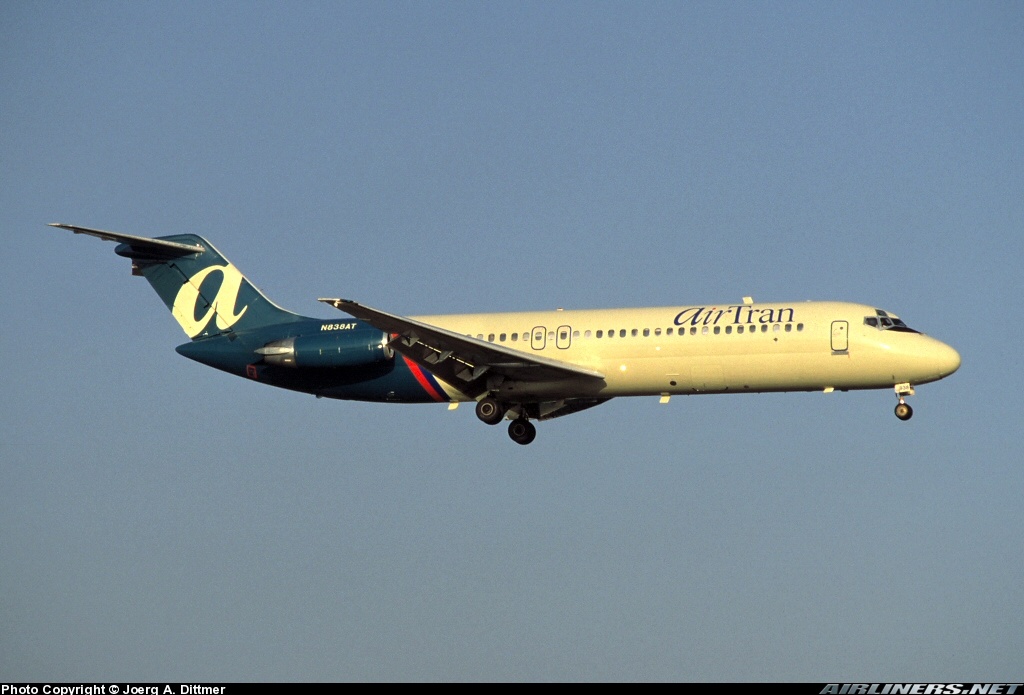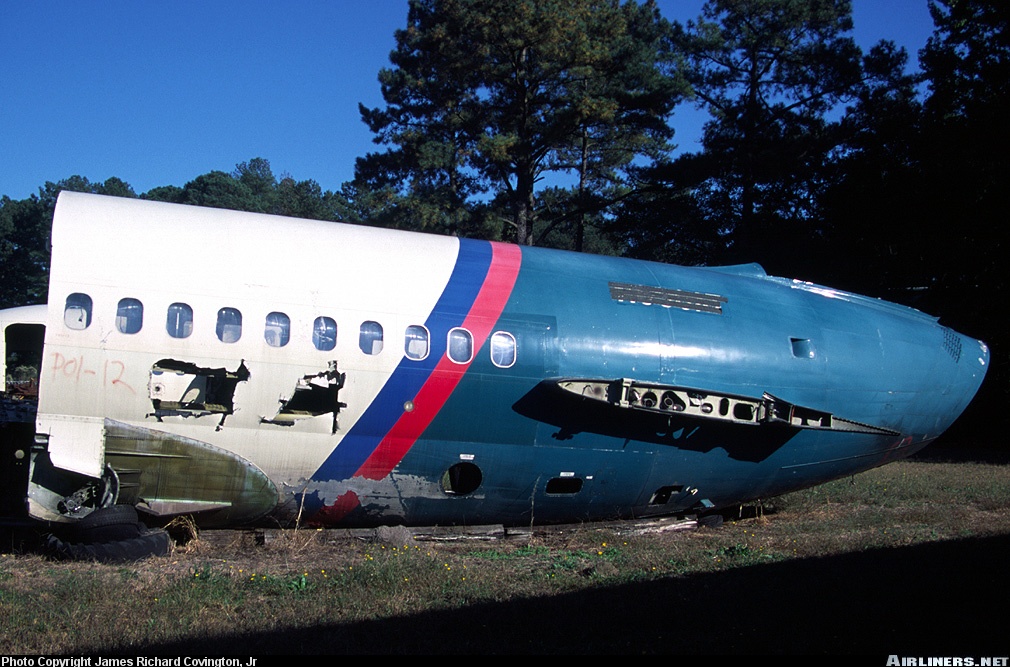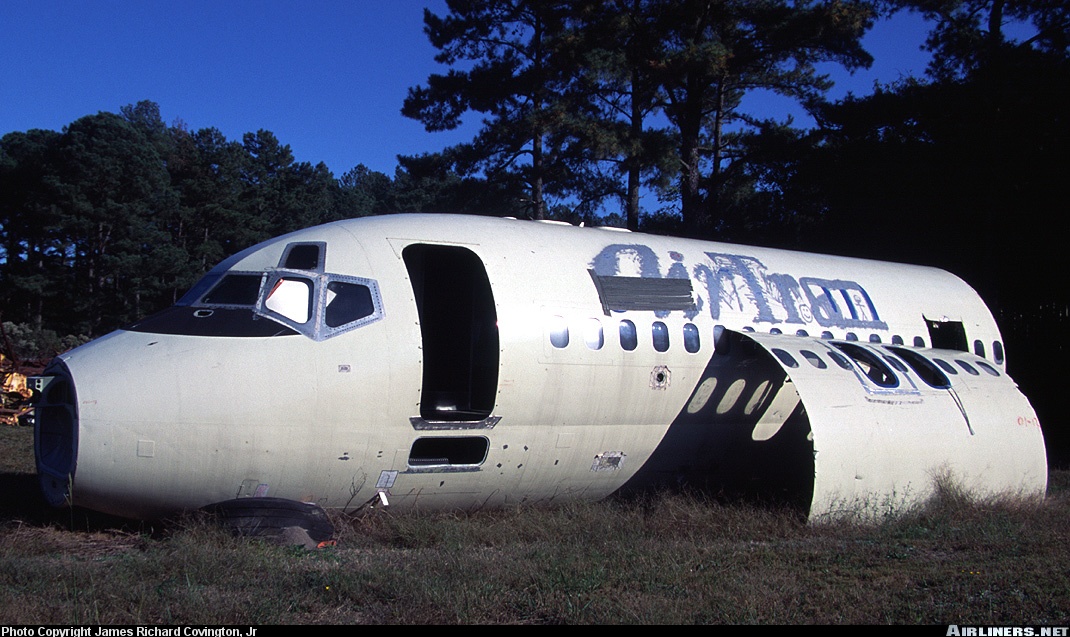Country
Ground fire of a Douglas DC-9-32 in Atlanta
Date & Time:
Nov 29, 2000 at 1550 LT
Registration:
N826AT
Survivors:
Yes
Schedule:
Atlanta - Akron
MSN:
47359/495
YOM:
1969
Flight number:
FL956
Crew on board:
5
Crew fatalities:
Pax on board:
92
Pax fatalities:
Other fatalities:
Total fatalities:
0
Captain / Total hours on type:
6000.00
Copilot / Total hours on type:
0
Aircraft flight hours:
78255
Aircraft flight cycles:
88367
Circumstances:
Shortly after takeoff, the airplane experienced electrical problems, including numerous tripped circuit breakers. The flight crew requested a return to airport. During the landing rollout, the lead flight attendant and air traffic control personnel reported to the flight crew that smoke was coming from the left side of the airplane; subsequently, the flight crew initiated an emergency evacuation on one of the taxiways. Examination of the airplane revealed fire damage to the left, forward areas of the fuselage, cabin, and forward cargo compartment. The greatest amount of fire damage was found just aft of the electrical disconnect panel located at fuselage station 237. There was no evidence that the drip shield normally installed over the disconnect panel was present at the time of the accident. Bluish stains caused by lavatory rinse fluid were observed on surfaces near the disconnect panel on the accident airplane and in the same areas on another of AirTran's DC-9 airplanes. Examination of one of the connectors from the disconnect panel on the accident airplane revealed light-blue and turquoise-green deposits on its internal surfaces and evidence of shorting between the connector pins. It could not be determined when the drip shield over the disconnect panel was removed; however, this likely contributed to the lavatory fluid contamination of the connectors. Following the accident, AirTran revised its lavatory servicing procedures to emphasize the importance of completely draining the waste tank to avoid overflows. Boeing issued an alert service bulletin recommending that operators of DC-9 airplanes visually inspect the connectors at the FS 237 disconnect panel for evidence of lavatory rinse fluid contamination and that they install a drip shield over the disconnect panel. Boeing also issued a service letter to operators to stress the importance of properly sealing floor panels and adhering to lavatory servicing procedures specified in its DC-9 Maintenance Manual. The Safety Board is aware of two incidents involving the military equivalent of the DC-9 that involved circumstances similar to the accident involving N826AT. Drip shields were installed above the FS 237 disconnect panels on both airplanes.
Probable cause:
The leakage of lavatory fluid from the airplane's forward lavatory onto electrical connectors, which caused shorting that led to a fire. Contributing to the accident were the inadequate servicing of the lavatory and the failure of maintenance to ensure reinstallation of the shield over the fuselage station 237 disconnect panel.
Final Report:
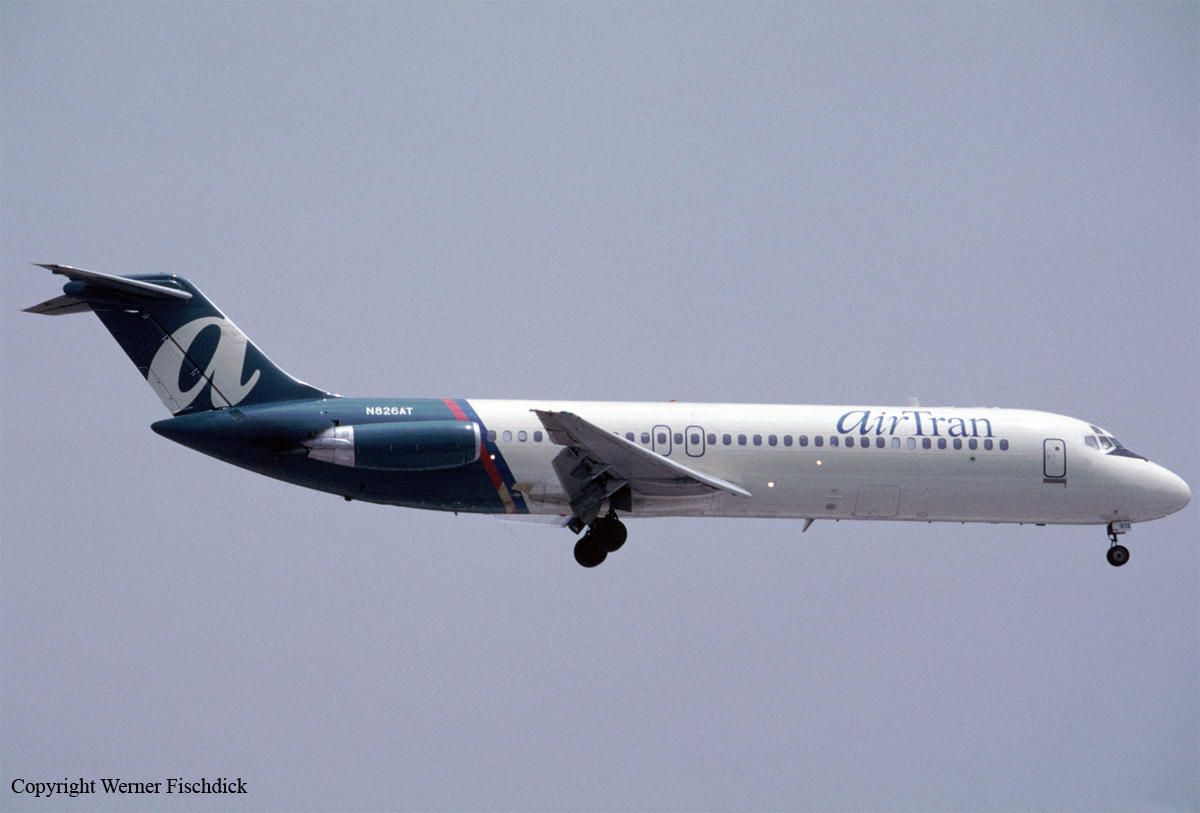
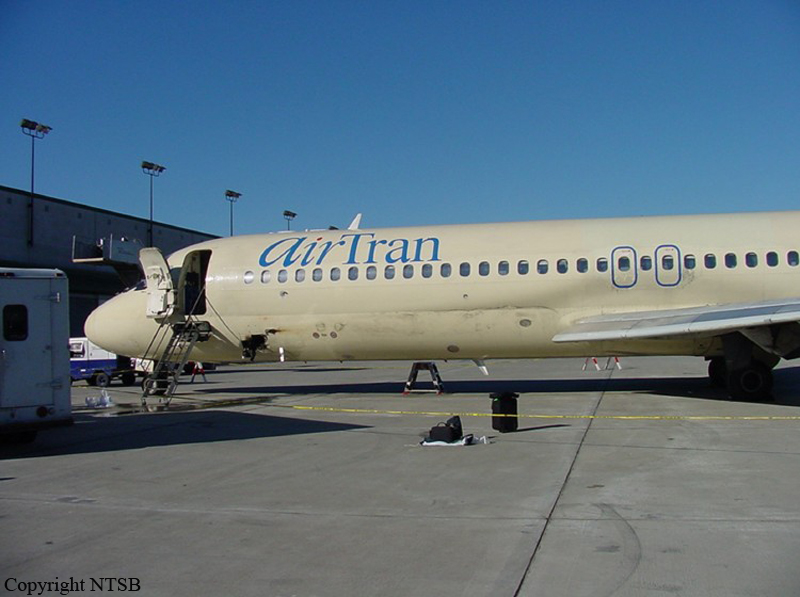
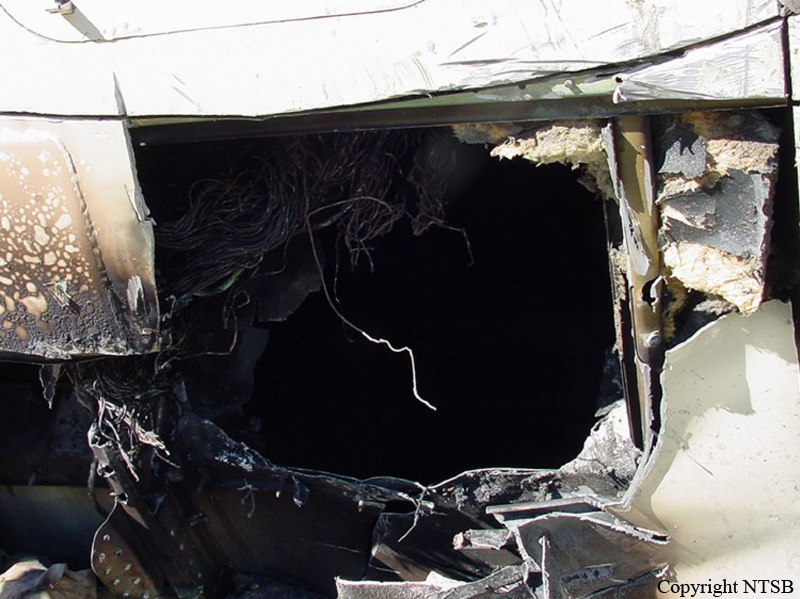
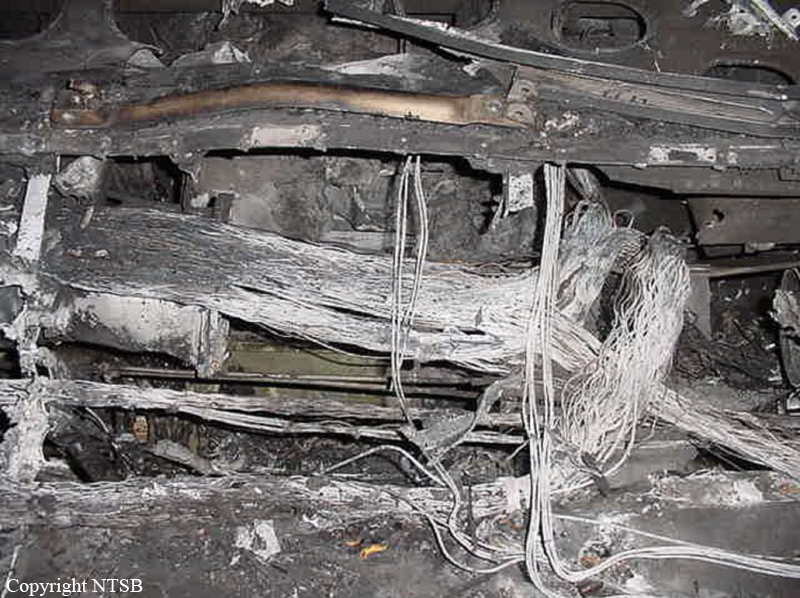
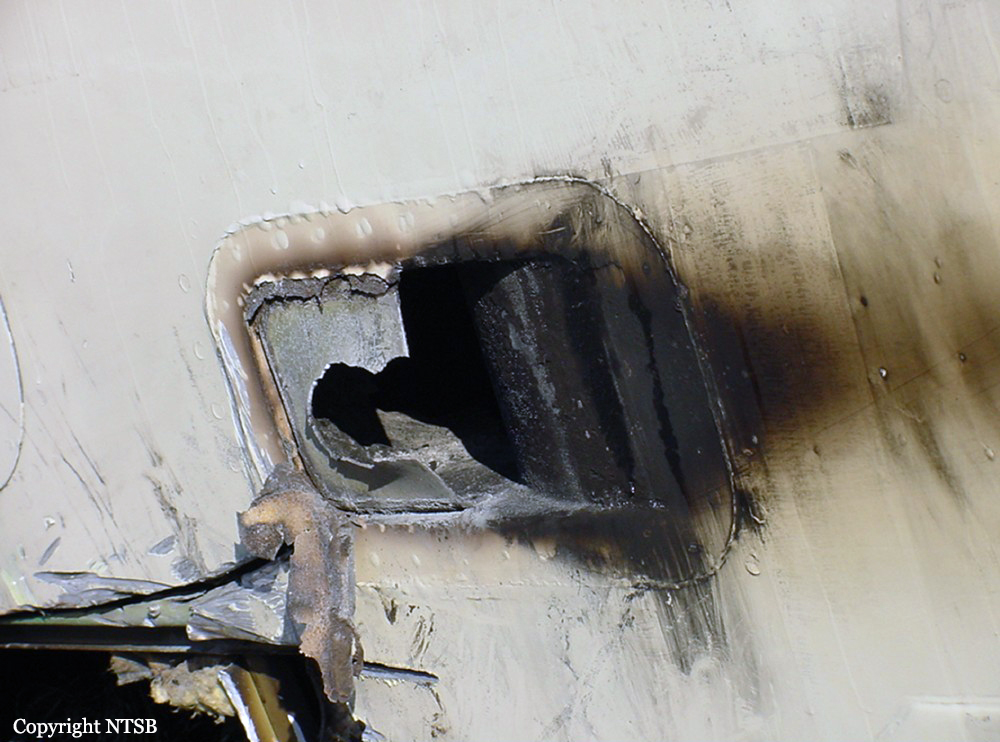
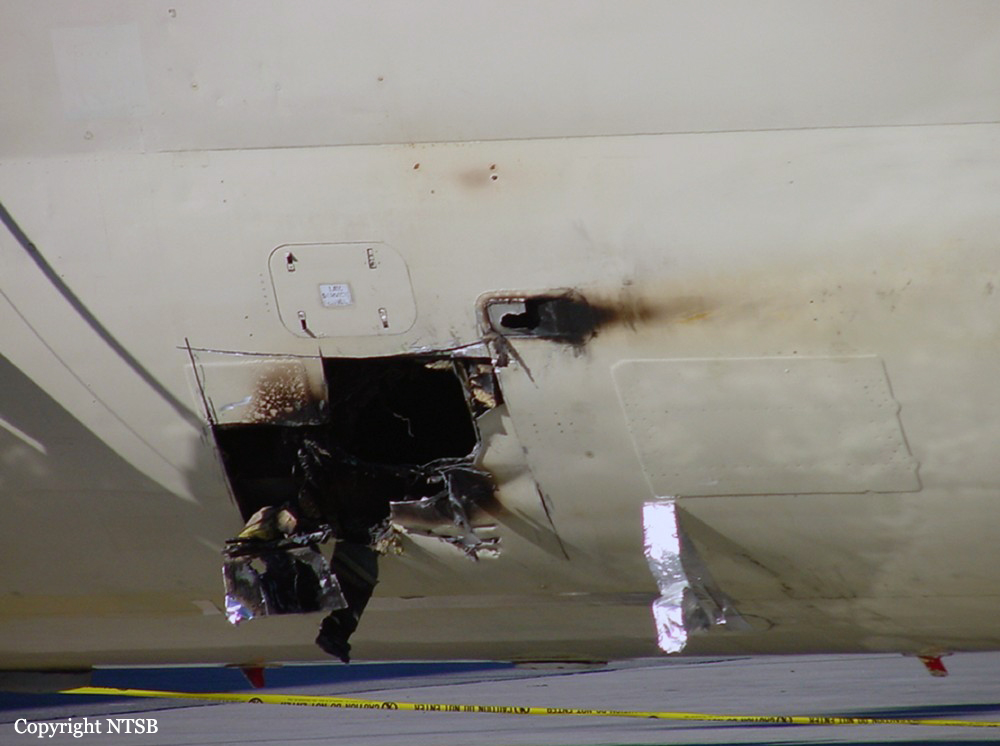
Crash of a Douglas DC-9-51 in Conakry
Date & Time:
Nov 13, 2000 at 1813 LT
Registration:
9G-ADY
Survivors:
Yes
Schedule:
Accra – Abidjan – Monrovia – Freetown – Conakry
MSN:
47679
YOM:
1975
Flight number:
GH530
Crew on board:
8
Crew fatalities:
Pax on board:
42
Pax fatalities:
Other fatalities:
Total fatalities:
0
Aircraft flight hours:
45600
Aircraft flight cycles:
64300
Circumstances:
While descending to Conakry-Gbessia Airport, the crew encountered technical problems with the undercarriage that could not be lowered. Several attempts were made to lower the gear manually but this was unsuccessful. The crew decided to complete a belly landing. After touchdown, the aircraft slid for few dozen metres and came to rest on the runway. All 50 occupants evacuated safely and the aircraft was damaged beyond repair.
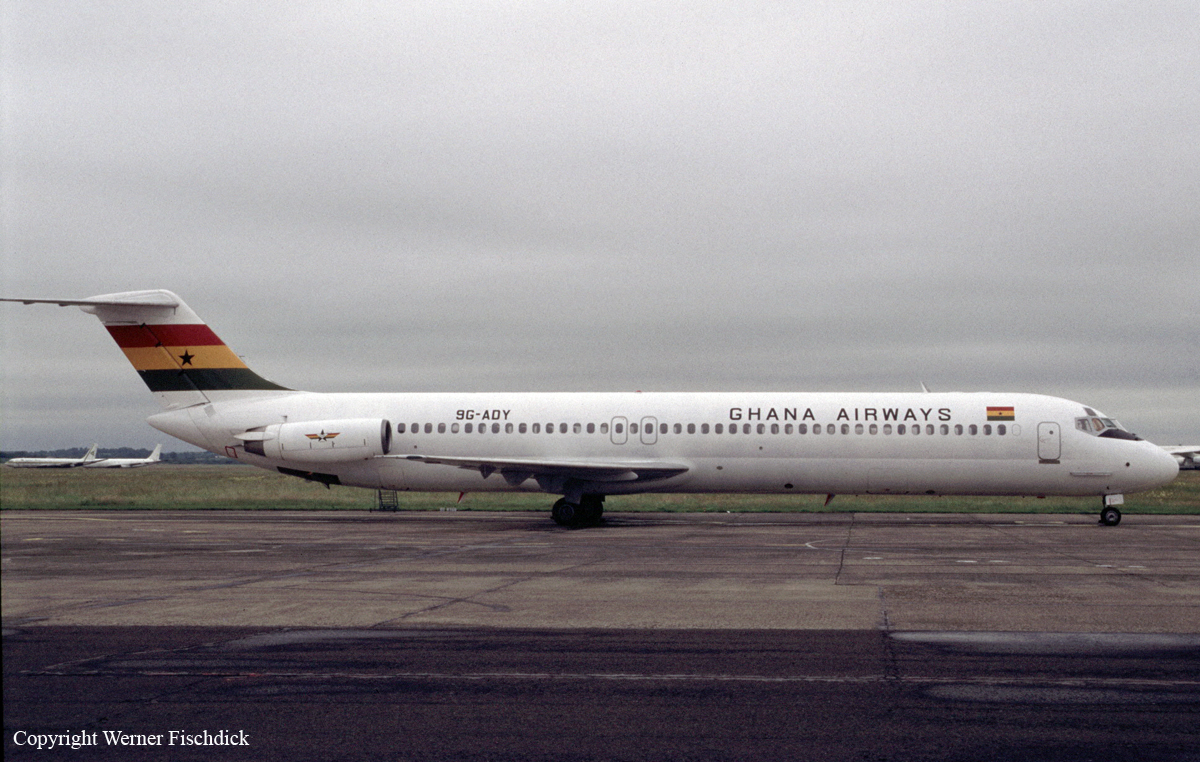
Crash of a Douglas DC-9-31 in Reynosa: 4 killed
Date & Time:
Oct 6, 2000 at 1655 LT
Registration:
N936ML
Survivors:
Yes
Schedule:
Mexico City - Reynosa
MSN:
47501
YOM:
1970
Flight number:
AM250
Crew on board:
5
Crew fatalities:
Pax on board:
85
Pax fatalities:
Other fatalities:
Total fatalities:
4
Captain / Total hours on type:
701.00
Copilot / Total hours on type:
40
Aircraft flight hours:
74277
Circumstances:
Following an uneventful flight from Mexico City, the crew started the descent to Reynosa-General Lucio Blanco Airport and encountered poor weather conditions with heavy rain falls issued from the tropical storm 'Keith'. Following a wrong approach configuration, the aircraft was too high on the glide and approaching at an excessive speed. It landed too far down the wet runway 31 and was unable to stop within the remaining distance. It overran, lost its undercarriage, struck several houses, went down an embankment and came to rest in a canal. All 90 occupants were rescued, among them one passenger was slightly injured. On the ground, four people were killed.
Probable cause:
Long landing and contact, after a high approach with excessive speed as a result of a non-precision approach, on a waterlogged runway and in adverse weather conditions (discharge of CB's in the area), with the aircraft departing from the opposite runway threshold (13).
Final Report:
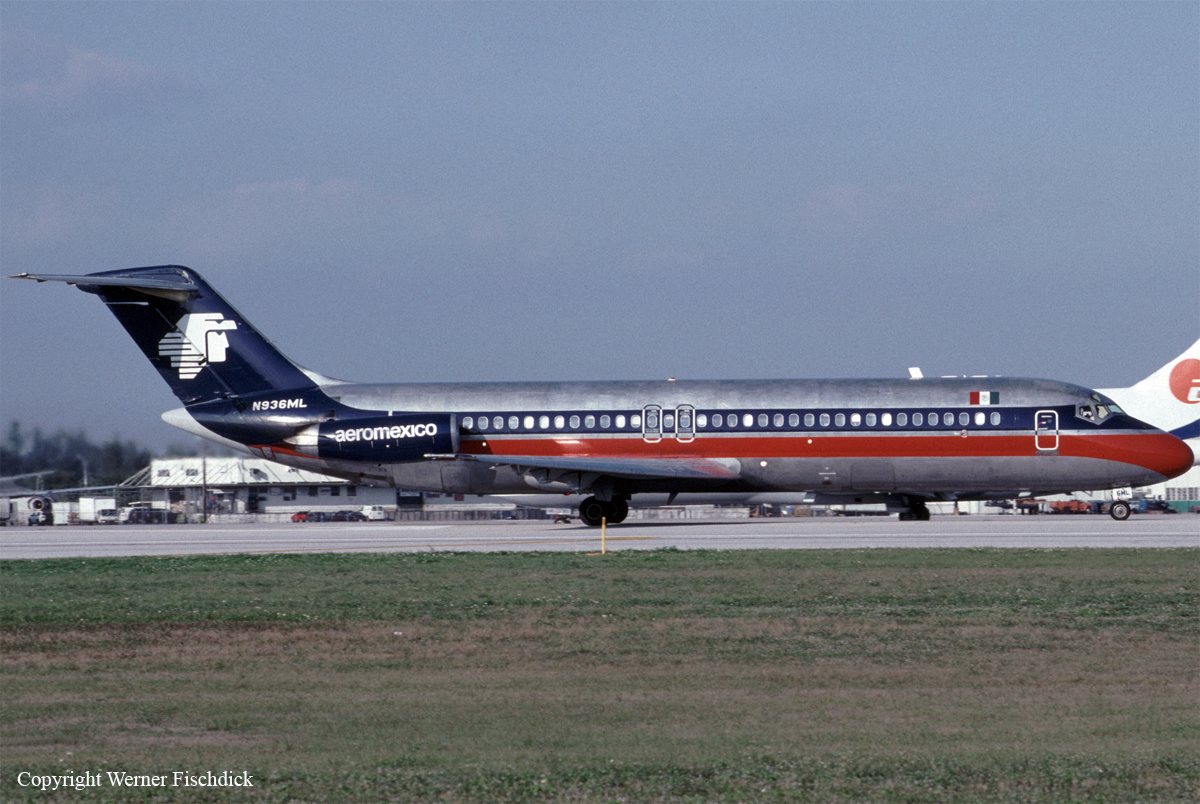
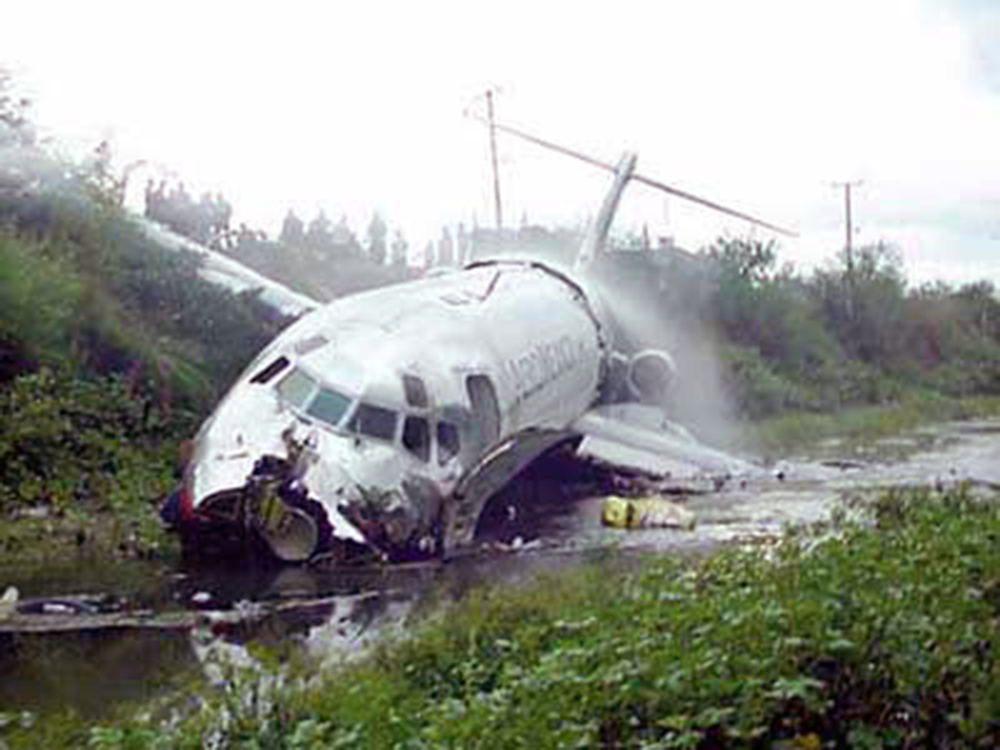
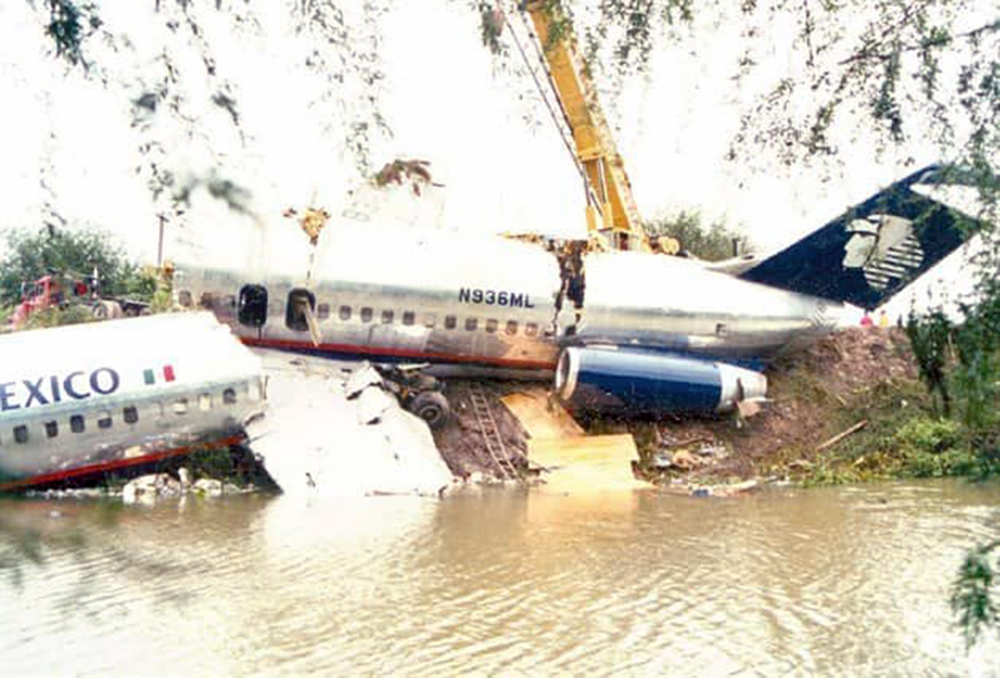
Crash of a Douglas DC-9 in Greensboro
Date & Time:
Aug 8, 2000 at 1544 LT
Registration:
N838AT
Survivors:
Yes
Schedule:
Greensboro - Atlanta
MSN:
47442/524
YOM:
1970
Flight number:
FL913
Crew on board:
5
Crew fatalities:
Pax on board:
58
Pax fatalities:
Other fatalities:
Total fatalities:
0
Captain / Total hours on type:
15000.00
Copilot / Total hours on type:
2000
Circumstances:
Examination of the area of the fire origin revealed that relay R2-53, the left heat exchanger cooling fan relay, was severely heat damaged, as were R2-54 and the other relays in this area. However, the R2-53 relay also exhibited loose terminal studs and several holes that had burned through the relay housing that the other relays did not exhibit. The wire bundles that run immediately below the left and right heat exchanger cooling fans and the ground service tie relays exhibited heat damage to the wire insulation, with the greatest damage located just below the R2-53 relay. The unique damage observed on the R2-53 relay and the wire damage directly below it indicates that fire initiation was caused by an internal failure of the R2-53 relay. Disassembly of the relay revealed that the R2-53 relay had been repaired but not to the manufacturer's standards. According to the manufacturer, the damage to the relay housing was consistent with a phase-to-phase arc between terminals A2 and B2 of the relay. During the on-scene portion of the investigation, three of the four circuit breakers in the left heat exchanger cooling fan were found in the tripped position. To determine why only three of the four circuit breakers tripped, all four were submitted to the Materials Integrity Branch at Wright-Patterson Air Force Base, Dayton, Ohio, for further examination. The circuit breakers were visually examined and were subjected to an insulation resistance measurement, a contact resistance test, a voltage drop test, and a calibration test (which measured minimum and maximum ultimate trip times). Testing and examination determined that the circuit breaker that did not trip exhibited no anomalies that would prevent normal operation, met all specifications required for the selected tests, and operated properly during the calibration test. Although this circuit breaker appeared to have functioned properly during testing, the lab report noted that, as a thermal device, the circuit breaker is designed to trip when a sustained current overload exists and that it is possible during the event that intermittent arcing or a resistive short occurred or that the circuit opened before the breaker reached a temperature sufficient to trip the device.
Probable cause:
A phase-to-phase arc in the left heat exchanger cooling fan relay, which ignited the surrounding wire insulation and other combustible materials within the electrical power center panel. Contributing to the left heat exchanger fan relay malfunction was the unauthorized repair that was not to the manufacturer's standards and the circuit breakers' failure to recognize an arc-fault.
Final Report:
